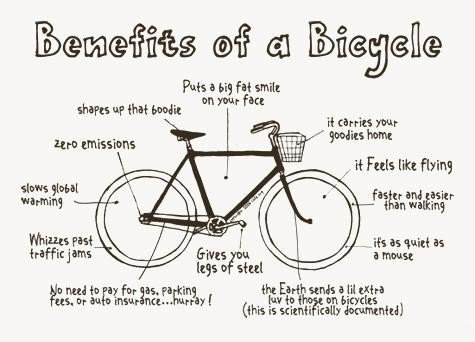CATALYSTS of all ages and from many geographies as well as environmental enthusiasts with an active agenda have been screaming this for years – shut that car away in a garage, pull out that bicycle for a healthy Earth and a healthier you.
Like Gil Penalosa, Parks Director, Bogota, who had successfully experimented with his ‘8-80 cities’ model since 1997 from Bogota to Australia, Belgium, New  Zealand and Israel and was in Bangalore recently for spreading the idea in this choke-a-bloc city. As his TOI interview excerpts reveal, this man is dedicated to transforming cities into places where people from an 8-year-old child to an 80-year-old person can walk, bike, access public transit and visit vibrant public places.
Zealand and Israel and was in Bangalore recently for spreading the idea in this choke-a-bloc city. As his TOI interview excerpts reveal, this man is dedicated to transforming cities into places where people from an 8-year-old child to an 80-year-old person can walk, bike, access public transit and visit vibrant public places.
The idea seems to take poignant contours when people like him remind us that the world average for pedestrian deaths is 14% per year, but in India it’s 51%.
Does that mean that Gil and his breed would be able to paint a world with more cycles and walk-free zones in an era where convenience, competition and urban habits have taken stubborn roots in the way we think, work, live and inhabit our cities?
May be yes, may be no. Or may be yes, not because of environmental guilt but out of economic and pragmatic reasons?
Picture how for the past few years, automotive leaders and observers have witnessed an industry in peril. As some studies iterate the downward slope reasons like slowing global economy, declining consumer confidence, and others have been accentuating the spiral of dismal new car sales in most markets.
The same study by Deloitte (titled “A new era: Accelerating toward 2020) adds that cars today are safer, more fuel efficient, and more technically advanced than ever. Also, competitive and financial pressures have triggered many high profile bankruptcies and at the same time production utilization in North America, Western Europe, and Japan has dropped dramatically leading to widespread job losses.
What is remarkable to note is that even with discounts and other purchase incentives, consumers, are wary of an uncertain economic future and hesitant to spend on automotives.
 With the industry struggling for revival on one hand and deterrents of many other shades inhibiting customer side action on the other, there are umpteen chances of having that much-wished ‘a tad car less’ road soon.
With the industry struggling for revival on one hand and deterrents of many other shades inhibiting customer side action on the other, there are umpteen chances of having that much-wished ‘a tad car less’ road soon.
So when another Deloitte industry report on travel industry 2014 shows that in 2013, the UK government increased the Air Passenger Duty (APD) tax to a maximum £188 per person (vs. £92 in 2012) for long-haul premium flying or that Spain introduced a nearly 19 % average hike in airport tax, we can’t help but wonder that with such taxes being relayed to customers, even airlines industry could contribute its share to a less-congested sky probably.
For now, it’s adequate to absorb these nuggets that a Gen Y Recce Deloitte throws up. It turns out that over three-quarters of Gen Y consumers plan to purchase or lease a vehicle within the next five years and about more than half of Gen Y would prefer to be driving an alternative powertrain five years from now.
This 2014 Gen Y Automotive Consumer Study (that builds on four years of research) and other indicators that keep popping up about urban consumer’s dilemma, may be helping Gil’s cause in their own tortuous ways.












Recent Comments